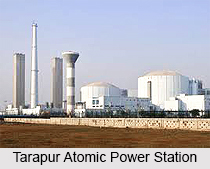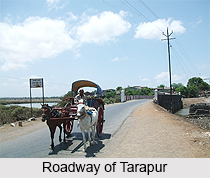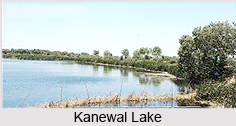 Tarapur is a town in Palghar district of Maharashtra.
Tarapur is a town in Palghar district of Maharashtra.
Location of Tarapur
Tarapur is an industrial town located some 45 km north of Virar, on the Western Railway line of Mumbai Suburban Division (Mumbai Suburban Railway).
History of Tarapur
Tarapur is mentioned as one of the towns conquered from the Naiks by Bhim the legendary ruler of Mahim in Bombay island. In 1533 it was burnt by the Portuguese. In 1556 the Portuguese possessions near Tarapur were greatly increased, and it was the head of the richest of the Daman districts. In 1559 an assault by some Abyssinian troops was successfully beaten off. In 1582, and again in 1612, the fort was unsuccessfully attacked by the Mughals. In 1634 Tarapur was the seat of a magistrate with powers over half of the Daman territories. It exported provisions in which the country round was rich, and had a good trade with Surat and Diu. Tarapur fort was surrounded by a wall with round bastions, and, besides quarters for the garrison, had a church, a Dominican monastery, and a hospital. The garrison of Tarapur fort included a captain, a naik, ten peons, and a bombardier, a police inspector and four peons, an interpreter, a writer, a torchbearer, and an umbrella boy. Besides the garrison there was the Vicar, and fifty Portuguese, 200 Native Christians and about 100 slaves, good fighters and well armed with swords, lances, and guns.
Tarapur fort was surrounded by a wall with round bastions, and, besides quarters for the garrison, had a church, a Dominican monastery, and a hospital. The garrison of Tarapur fort included a captain, a naik, ten peons, and a bombardier, a police inspector and four peons, an interpreter, a writer, a torchbearer, and an umbrella boy. Besides the garrison there was the Vicar, and fifty Portuguese, 200 Native Christians and about 100 slaves, good fighters and well armed with swords, lances, and guns.
Geography of Tarapur
Tarapur is located at 17.7 degree north to 75.47 degree east. It has an average elevation of 456 metres (1496 feet).
Economy of Tarapur
Tarapur Nuclear Power Station houses two boiling water reactors (BWRs), each of 200 MW (De-rated to 160MW), the first in Asia, and a recent unit with two pressurised heavy water reactors each of 540 MW. Tarapur Atomic Power Station was constructed by the American companies Bechtel and GE near village Akkarpatti. The new reactors (1080 MW) were constructed by L & T and Gammon India. Both these power stations are operated by Nuclear Power Corporation of India Limited. The personnel operating the power plant live in a residential complex called T. A. P. S. Township. Tarapur also houses two huge industrial estates Maharashtra Industrial Development Corporation, Tarapur Industrial Estate and Additional Tarapur Industrial Estate), which include bulk drug manufacturing units, specialty chemical manufacturing units, steel plants and a few textile plants.
 Demography of Tarapur
Demography of Tarapur
According to the Population Census in the year 2011, Tarapur had a population of 7012. The males constitute 50% of the population and females 50%. Tarapur has a literacy rate of 91% for both males and females, much higher than the national average of 72%. In Tarapur, 11% of the population is under 6 years of age.
Tourism of Tarapur
Tarapur is well known for Tarapur beach. It is Portuguese fort that was built in the year 1862, Tarapur Fort, with wells and gardens within, was given in inam by the Peshwa to Vikaji Mehrji, for a hundred years, and is still held by his heirs, and is currently in custody of Chorge family. Chinchani beach is another beautiful site. Tarapur port in the Mahim sub-division had a population of 2939 in 1881. Tarapur lies in a low wooded tract on the south bank of the Tarapur creek, sixty miles north of Mumbai, fifteen miles north of Mahim, and road seven miles north-west of the Boisar station of the Baroda railway.
Visiting Information
Tarapur can be reached from Boisar, the nearest railway station. Tarapur is 20 km off National Highway NH-8.



















